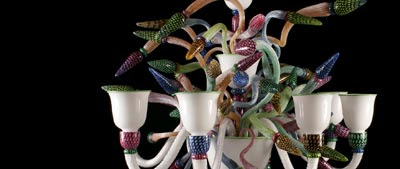


My pretty floor is a fake kolam (15 dots)... Instead of challenging both patience and vanity by making the pattern like Indian women, who put their pretty work out to be destroyed by walking feet, I painted it. When I look at it now, I see I should fill in a few lost lines.
Kolams, a South Indian tradition, are symmetrical ornaments made by rural women, to decorate and sometimes celebrate. It's done at dawn, after sweeping the ground in front of the house and sprinkling a little water to keep the red dust in place.
I found Kolam Book number 1-10 at the market in Madurai, some ten years ago. Just looking at the books makes me happy. They connect to childhood memories of monogram letter books, to copy from for embroideries. I did learn how to write from them.
The everyday kolam is made with white powder (used to be rice powder) held in one hand and skillfully portioned. Dots first as guides for the eyes. They tell the hand where to gracefully dance in the air to release powder, so quick and light moves, and draw the line.
The basic pattern is a mathematical construction of beauty, one single line with no beginning and no end. Let's start with the easiest. Trick is to always count the dots in the grid; one two three:

Are you ready for some more complicated? These need 4 lines with 4 dots each, and show variations. Either the dots are connected with the lines or the lines run between them.

Think what great tool this is for rural Indian girls to practice math!
Need to scan some slides before I post more.
Only one link today, you need the time to practice.
Karin Östberg, ceramic artist and Konstepidemin neighbor, started a studio blog. Her work is like 3D kolams.

















































.jpg)

